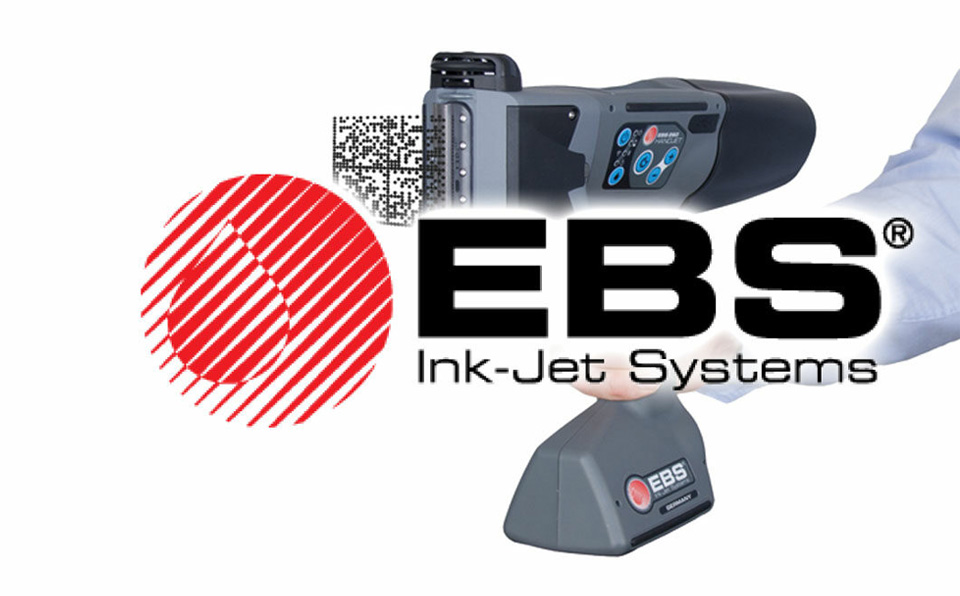WE’RE HERE FOR YOU:
Product Sales & Service: 847.996.0739
MENUMENU
The PicAS EBS-230 ink-jet printer sets a new benchmark in regard to configuration and cost-effectiveness of basic DOD systems. Easy handling, robust design, a user-friendly interface and unbeatable efficiency are only some of the outstanding features of PicAS EBS-230 series of dual-line coders.
Equipped with a print-head where electromagnetic valves are installed, the standalone PicAS EBS-230 device is ideal for users who want economical operation, but still require sophisticated features.
IP rated, along with the ability to use water-based, ethanol, acetone or MEK inks, the PicAS EBS-230 provides a universal solution for various marking applications and surfaces including cardboard, plastics, metal, glass or ceramics. The PicAS EBS-230 can print on traditional smooth and porous surfaces as well as uneven surfaces with irregular shapes, such as pipes, bags or construction materials.
In addition, the printing process is fully automated by the application of a photo-detector for detecting objects to be labeled and of an optional shaft encoder for detecting speed of factory conveyors. The PicAS EBS-230 system works with any IBM-compatible PC via the printer’s own control program to be run under MS Windows® or an optional touch-screen.
Prints: Up to 2 lines of 7 x 5 matrix or 5 x 5 matrix
Print height: 6-27 mm with 16-nozzle printhead
Printhead position: Any
Memory: 30 texts with up to 1300 characters each
Print speed: 600 vertical rows/sec, up to 60 m/min
Special characters: National (diacritical) characters, graphic characters for information, warnings, transport purposes, etc.
Special registers: Date and time in any format, expiry date, incremental counter, decremental counter
Programming: Software for editing text and parameter, compatible with Windows® 98SE/ME/NT/2000/XP/Vista or programming via Terminal “T200”, data transfer via provided connection cable
Ink consumption: ca. 2,000,000 characters per 1 liter (7×5 matrix)
Weight: <1.600 g excluding the ink bottle
Elements of the printing system: Printhead, junction box including power supply and photocell, USB cable from PC to EBS-230, 1 liter ink delivery system, printhead holder, PC software and user’s manual on a CD-rom
Nozzle diameter: 150 μ
Simulation of Windows® fonts: Possible, limited to the vertical print resolution
Compressed air supply: Not required!
Ink bases: Water; Ethanol; Acetone; MEK
Timing: Internal generator or optional shaft encoder (for varying conveyor speed)
Power supply: 100-240 V~
Click to enlarge images.



Check ink level in the ink bottle. If the bottle is empty (the message: INK LACK or EMPTY BOTTLE is shown on the terminal display), replace it. In the systems with electromagnetic heads and the pump-based ink system, the ink bottle can be replaced while the printing operation is being performed. If a compressor system is used you need to stop the printing and depressurize the ink system – see section 2.3.5 Installing a new Bottle of Ink (or Replacing an Empty One). After the machine has been switched off – wash outer parts of the print head, especially the nozzles and photodetector in order to remove any remaining ink.
Once a week (or more frequently, if required) – check the state of supply air filters (which remove water, oil etc.) and clean them, Every 1000 hours of operation – check the ink filter in the bottle. Use the ACTIVITY TIME command to check for how many hours the printer has run. The total number of run hours (hours: minutes) is displayed on the terminal. Replace the ink filter every 12 months.
If the printer is not to be used for a longer time (over 2 weeks), secure the print heads as described in section 7.1 Storing the Printer. NOTE! The use of sharp tools or improper fluid (solvent) to clean and wash the head may result in damage that is not covered by the warranty! Ink and cleaning fluid (solvent) can only be used, if supplied by the printer Manufacturer! Different ink types must not be mixed! THE FAILURE TO MEET THE ABOVE REQUIREMENTS SHALL RELEASE THE MANUFACTURER FROM ITS WARRANTY OBLIGATIONS.
Removing Air from the Ink System Transport, manipulations to the ink system, or other reasons may result in accumulation of air within the print head. In consequence ink drops are not jetted from some or all nozzles. In order to remove air from the print head, follow the instructions below:
NOTE: Electronic protections are installed in the power supply in compliance with standards. There is no fuse that might be replaced by the user.
NOTE: The above operations need to be performed under strictly clean conditions. Do not leave any foreign objects under the nozzle plate. If the plate is fastened improperly, the nozzles may get damaged (ruby tip may break) or leaking may occur.
Product Sales/Service: (847) 996-0739 or sales@ebs-inkjet-usa.com
EBS Ink-Jet Systems USA, Inc.
1840 Industrial Drive, Suite 200
Libertyville, IL 60048
Subscribe and receive our newsletter — Helping You Make Better Marks News — filled with the latest information on cutting‐edge solutions for contact‐free marking and coding, including new product developments, user tips, print sample requests, upcoming events, and more!
We respect your privacy and will not share your information. This newsletter is distributed every other month.